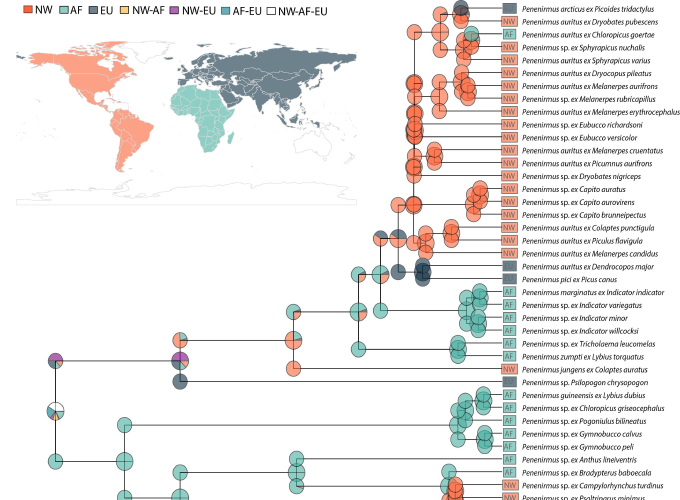The interplay between host biogeography and phylogeny in structuring diversification of the feather louse genus Penenirmus
Abstract
Parasite diversification is influenced by many of the same factors that affect speciation of free-living organisms, such as biogeographic barriers. However, the ecology and evolution of the host lineage also has a major impact on parasite speciation. Here we explore the interplay between biogeography and host-association on the pattern of diversification in a group of ectoparasitic lice (Insecta: Phthiraptera: Penenirmus) that feeds on the feathers of woodpeckers, barbets, and honeyguides (Piciformes) and some songbirds (Passeriformes). We use whole genome sequencing of 41 ingroup and 12 outgroup samples to develop a phylogenomic dataset of DNA sequences from a reference set of 2395 single copy ortholog genes, for a total of nearly four million aligned base positions. The phylogenetic trees resulting from both concatenated and gene-tree/species-tree coalescent analyses were nearly identical and highly supported. These trees recovered the genus Penenirmus as monophyletic and identified several major clades, which tended to be associated with one major host group. However, cophylogenetic analysis revealed that host-switching was a prominent process in the diversification of this group. This host-switching generally occurred within single major biogeographic regions. We did, however, find one case in which it appears that a rare dispersal event by a woodpecker lineage from North America to Africa allowed its associated louse to colonize a woodpecker in Africa, even though the woodpecker lineage from North America never became established there.
